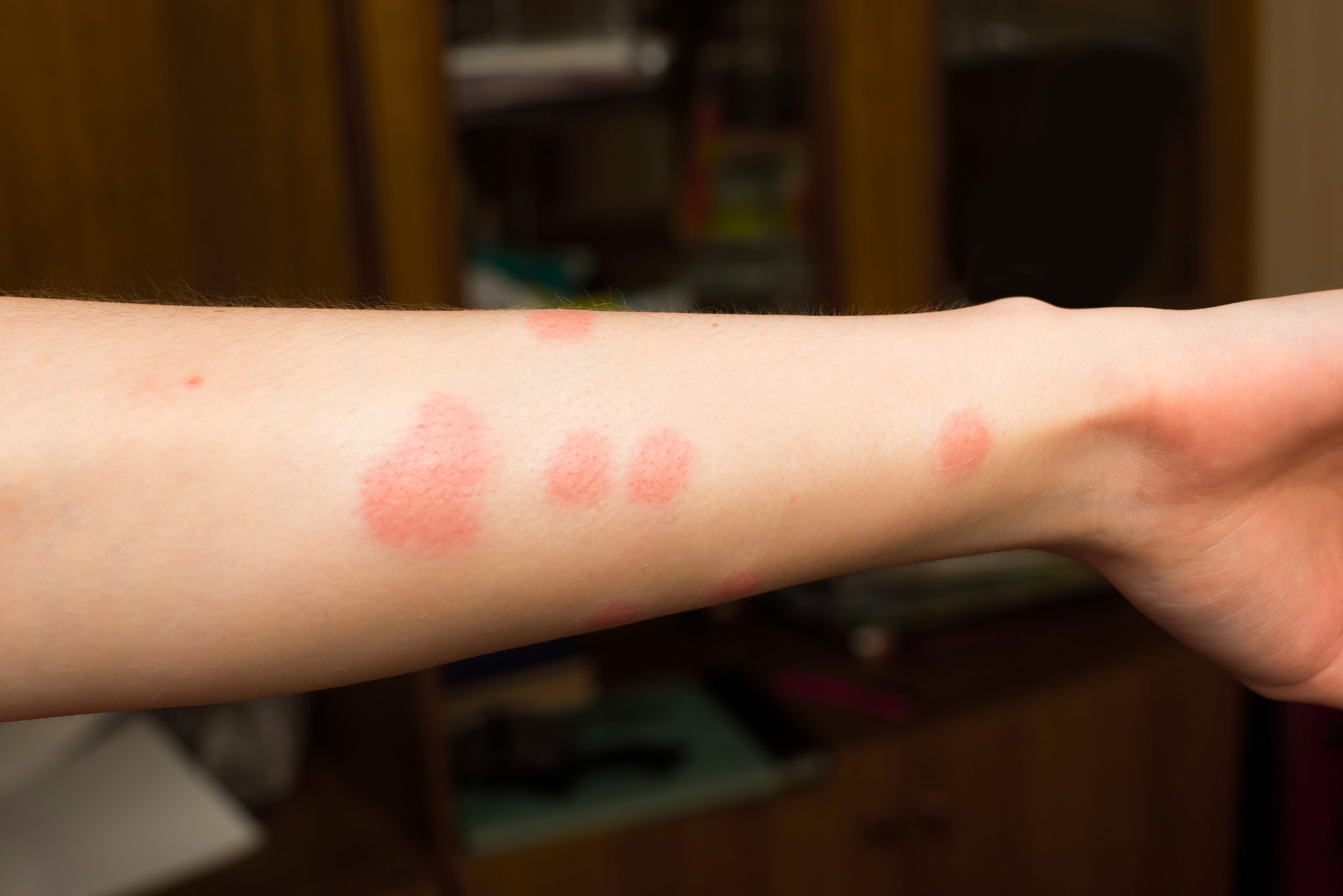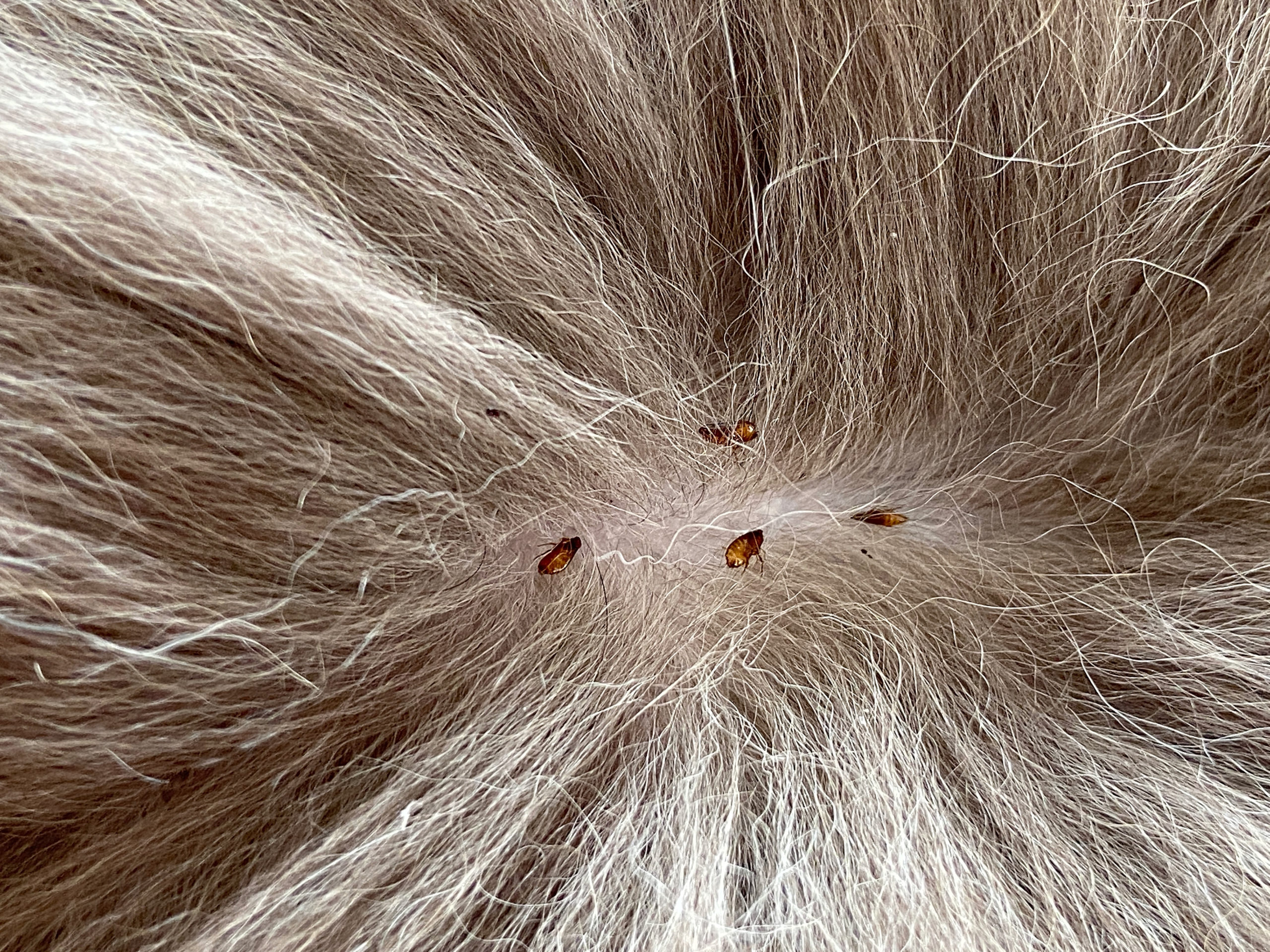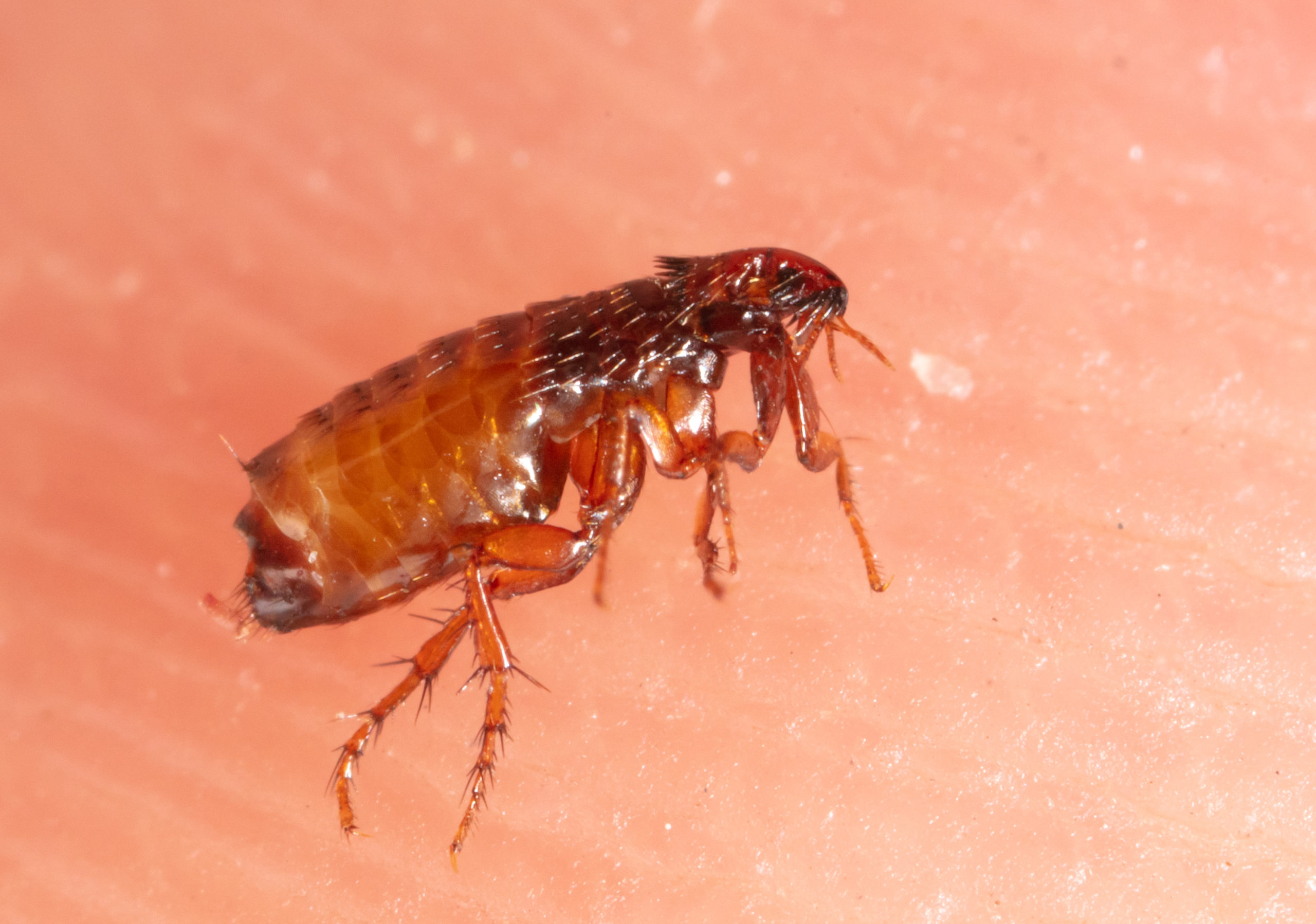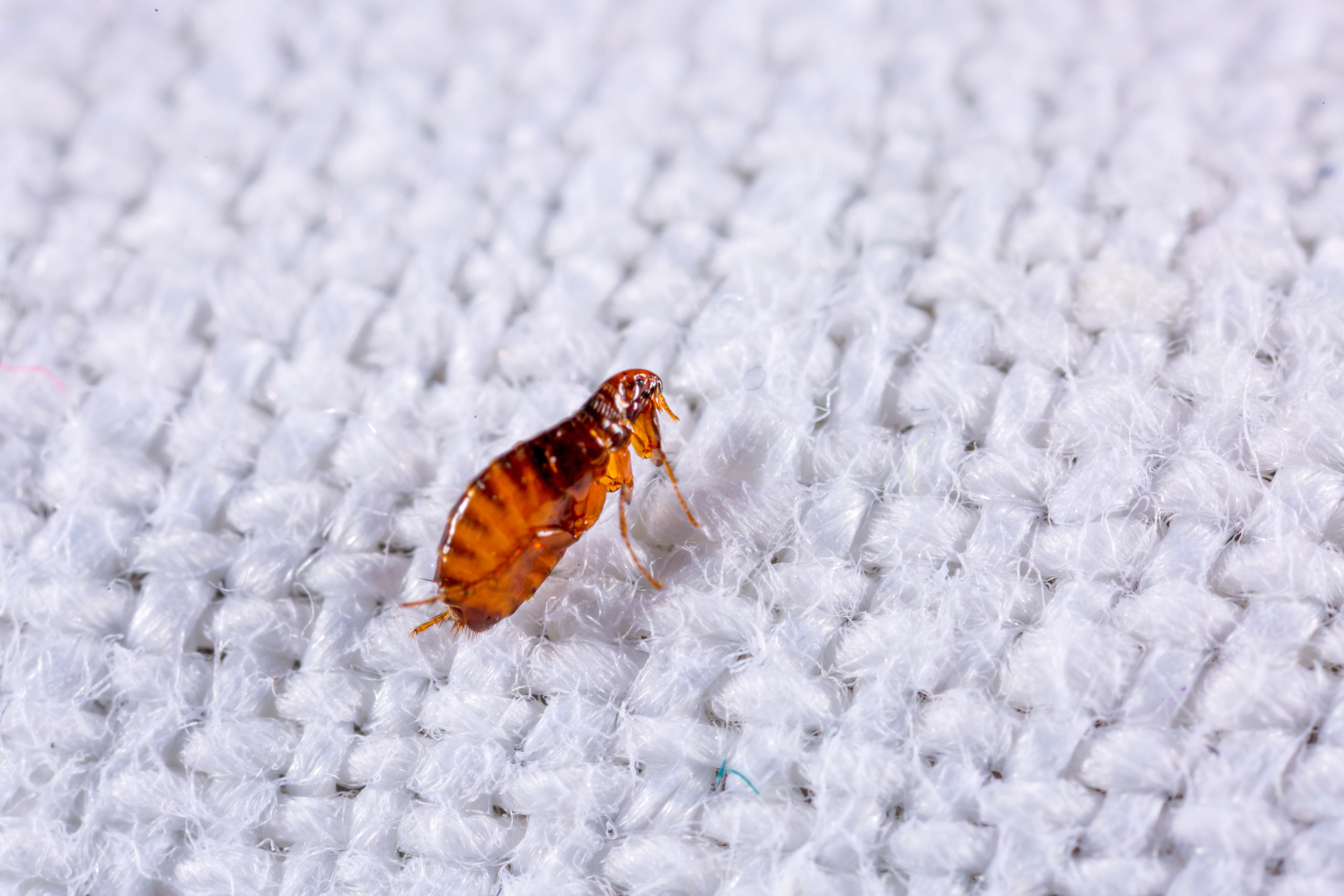Flea Bites
Flea Bites
What Do Flea Bites Look Like?
Flea bites appear as small, red-colored bumps and tend to be in little clusters. Sometimes an extra reddish halo appears around the center of the bite as well. Depending on the person, the severity of flea bites can vary. Some people are far more sensitive to the bites of fleas than others. In general, the bites are very itchy and cause skin irritation in the surrounding areas leading to sores or rashes.

The Dangers of Bites
When considering dangerous pests, people most commonly think of mosquitos, ticks, and roaches. However, one of the most dangerous pests historically was the flea. In the early Middle Ages between 541 to 767 the bacterium Yersinia Pestis (aka the Black Plague, Black Death, or the Bubonic Plague) spread throughout Europe, yielding a hefty death toll. In the 14th Century, the plague resurfaced with a vengeance, claiming the lives of over 50 million. For years, the theory behind the sudden and rapid spread of the disease was that rats were carrying and transmitting the pathogens from person to person. However, after more recent consideration and exploration into this theory, it was discovered that the fleas on rats were most likely the true culprits of the historical pandemic.
Today, the black plague is still in existence, although, thankfully, our modern medicine can now treat the bacteria if caught early enough. In addition to Yersinia Pestis fleas can still carry and transmit other highly damaging diseases including Tularemia and Typhus.

Our Furry Friends
In addition to putting us in danger, fleas also pose a lot of risks to our beloved furry friends. In fact, most prominent species of flea in the U.S. is the Ctenocephalides felis, or the “cat flea,” though, this is a misnomer as these fleas most commonly infect dogs.
When fleas bite, their saliva is injected into the dermis of their victims which can cause several problems for dogs and cats. The most common reaction is an immune response called flea allergy dermatitis (FAD), which results in intense itchiness and skin irritation. In other severe cases, when various fleas are attacking one host, your dog or cat could be at risk of developing a very serious medical condition: anemia. If your pet is developing anemia, you may notice increased lethargy, labored and/or rapid breathing, and weakness – all signs that your furry friend requires immediate medical intervention. If left untreated, this flea-induced condition can unfortunately even lead to death.

Preventing Fleas
Fleas tend to enter homes on pets that spend time outdoors or with other pets. Thankfully, there are a variety of preventative treatment options available for pet owners to help protect their pets, however, most cases of flea infestations occur when such preventative treatments are not applied to pets, or are done improperly, allowing fleas to target the pet and thereby enter the home.
However, just like fleas can use pets to get into homes, they can use other animals as well, just like how they used rats during the spread of the Black Death. So, if you begin to notice fleas in a pet-less home, this may actually be due to a rodent infestation. For example, in one case in Talmo, Georgia, a pest control professional was met with an army of fleas that were crawling out of the light fixture on the ceiling of his customer’s home. After some additional investigating, the technician discovered that the source of the fleas was a racoon who had nested in the attic of the home just above that ceiling. These cases are considered double infestations and can be quite a headache to handle without professional intervention.

Treating Flea Infestations
Fleas are far from being simple annoyances and are considered very serious pests due to the variety of health risks they pose. At Green Pest Services, our flea experts can work with you to rid your home of these nasty parasites. Our treatments target these pests throughout your home and work to not only remove the fleas that are currently present but help prevent any future infestations as well.
Stay safe! Stay flea-free!

Citations
Anemia (no date) Mayo Clinic. Mayo Foundation for Medical Education and Research. Available at: https://www.mayoclinic.org/diseases-conditions/anemia/symptoms-causes/syc-20351360 (Accessed: September 2020).
Audoin-Rouzeau, F. (1999) [The Black Rat (Rattus rattus) and the Plague in Ancient and Medieval Western Europe], PubMed.gov. U.S. National Library of Medicine – The National Center for Biotechnology Information. Available at: https://pubmed.ncbi.nlm.nih.gov/11000955/ (Accessed: February 4, 2021).
Fleaborne Diseases of the United States (2020) Centers for Disease Control and Prevention. U.S. Department of Health and Human Services. Available at: https://www.cdc.gov/fleas/diseases.html (Accessed: September 2020).
The Hidden Dangers of Flea Bites: What to Look For (no date) The Associated Press. Seresto. Available at: https://apnews.com/sponsored/?prx_t=z40EAq48yAniAPA&prx_ro=s&ntv_fpc=671dc30c-79c6-4e77-b41f-040c722e9642&ntv_fr (Accessed: September 2020).
Hill, C. and MacDonald, J. (2008) Fleas, Purdue University . Purdue’s College of Agriculture: Entomology Department. Available at: https://extension.entm.purdue.edu/publichealth/insects/flea.html (Accessed: September 2020).
Holland, K. (2017) Everything You Need to Know About Fleabites, Healthline. Available at: https://www.healthline.com/health/flea-bites#TOC_TITLE_HDR_1 (Accessed: June 2020).
Pest Control Technology (2021) “The Pest: Always Looking for an ‘In’,” July, pp. 30–30.
Plague (2020) Centers for Disease Control and Prevention. The National Center for Emerging and Zoonotic Infectious Diseases and The Division of Vector-Borne Diseases. Available at: https://www.cdc.gov/plague/index.html (Accessed: January 27, 2021).
Plague (no date) World Health Organization. World Health Organization. Available at: https://www.who.int/health-topics/plague#tab=tab_1 (Accessed: February 4, 2021).
Prevention and Control: Fleas (N/A) Illinois Department of Public Health. The Division of Environmental Health. Available at: https://www.idph.state.il.us/envhealth/pcfleas.htm (Accessed: May 2020).
Tularemia (2018) Mayo Clinic. The Mayo Foundation for Medical Education and Research (MFMER). Available at: https://www.mayoclinic.org/diseases-conditions/tularemia/symptoms-causes/syc-20378635 (Accessed: May 2020).
Pests That Invade Packages & Boxes: How to Prevent Hidden Infestations
Pests That Invade Packages & Boxes: How to Prevent Hidden Infestations Pests That Invade Packages & Boxes: How to Prevent Hidden Infestations Summary: [...]
Keep Pests Out of Your Holiday Gatherings
Keep Pests Out of Your Holiday Gatherings Keep Pests Out of Your Holiday Gatherings Summary: The holiday season is all about good food [...]
Cold Weather vs. Warm Weather Infestations: How Temperature Shapes Pest Activity
Cold Weather vs. Warm Weather Infestations: How Temperature Shapes Pest Activity Cold Weather vs. Warm Weather Infestations: How Temperature Shapes Pest Activity Summary: [...]
Garden Pests Do Not Hibernate Indoors – How They Attack Houseplants And What To Do
Garden Pests Do Not Hibernate Indoors – How They Attack Houseplants And What To Do Garden Pests Do Not Hibernate Indoors – How They Attack [...]
The Scariest Pests (And Why They Freak Us Out)
The Scariest Pests (And Why They Freak Us Out) The Scariest Pests (And Why They Freak Us Out) Summary: A practical, homeowner-friendly guide [...]
Favorite Foods of Rats and Mice
Favorite Foods of Rats and Mice Favorite Foods of Rats and Mice Summary: Rats and mice are surprisingly picky about what they eat—especially [...]

